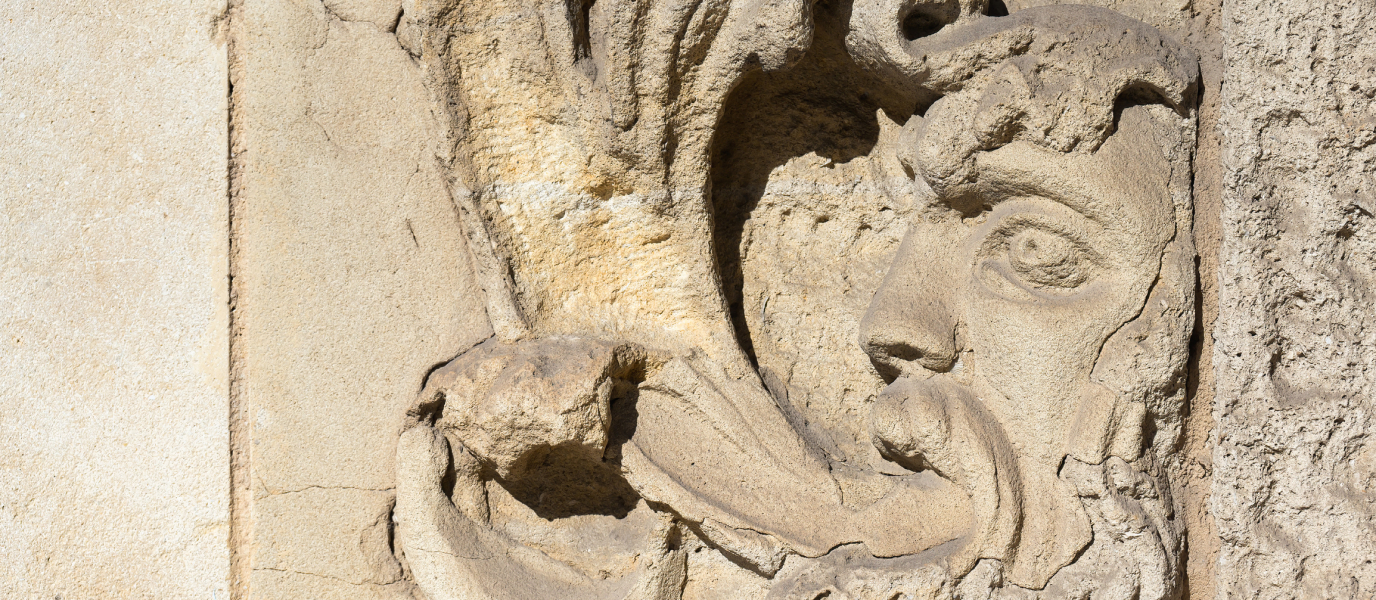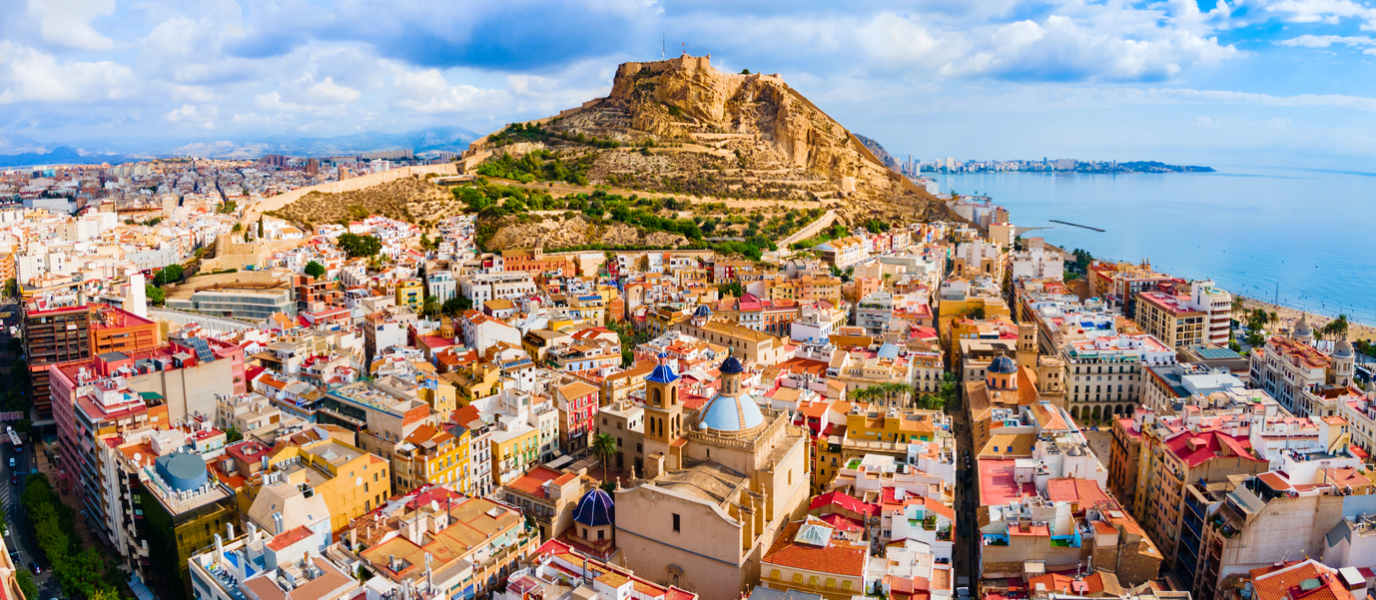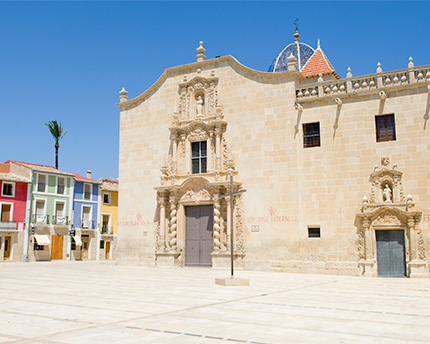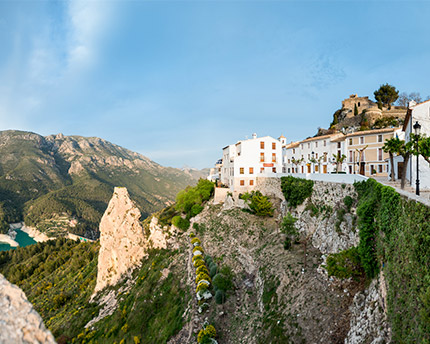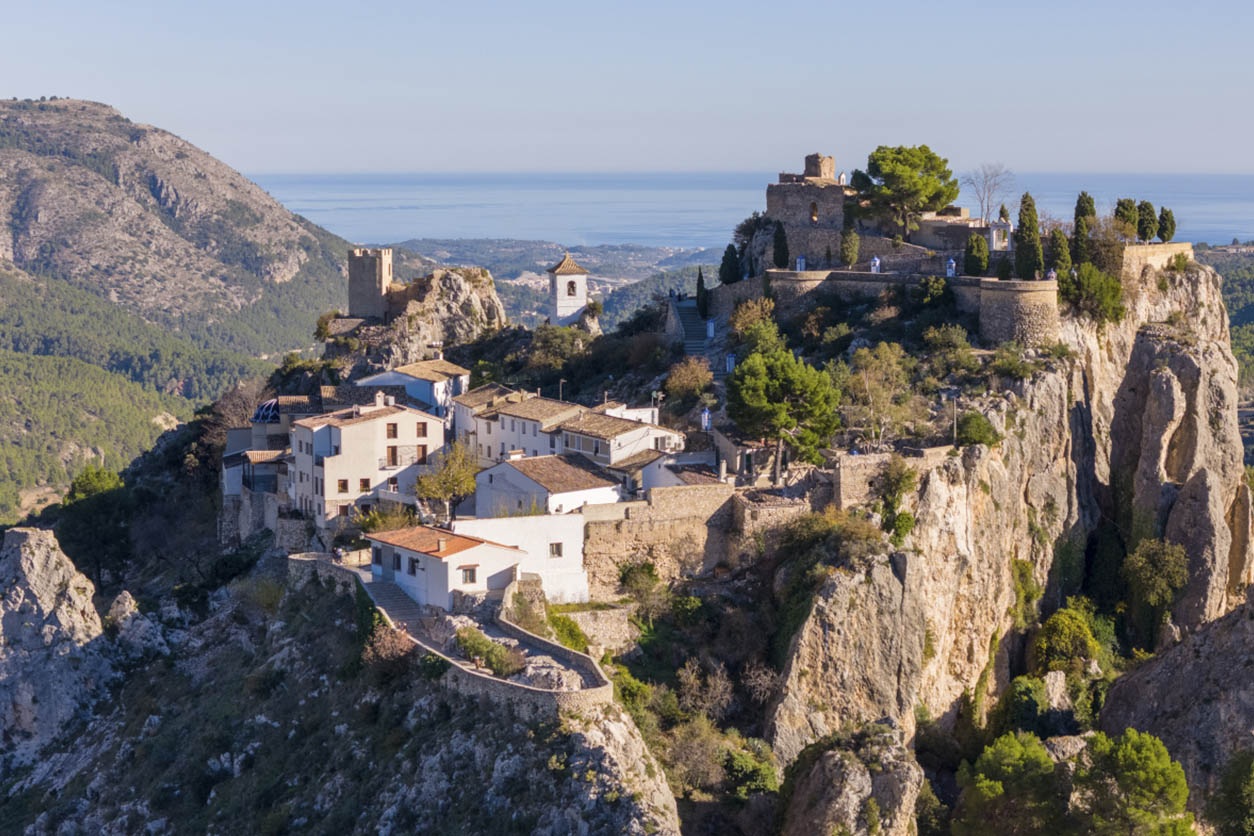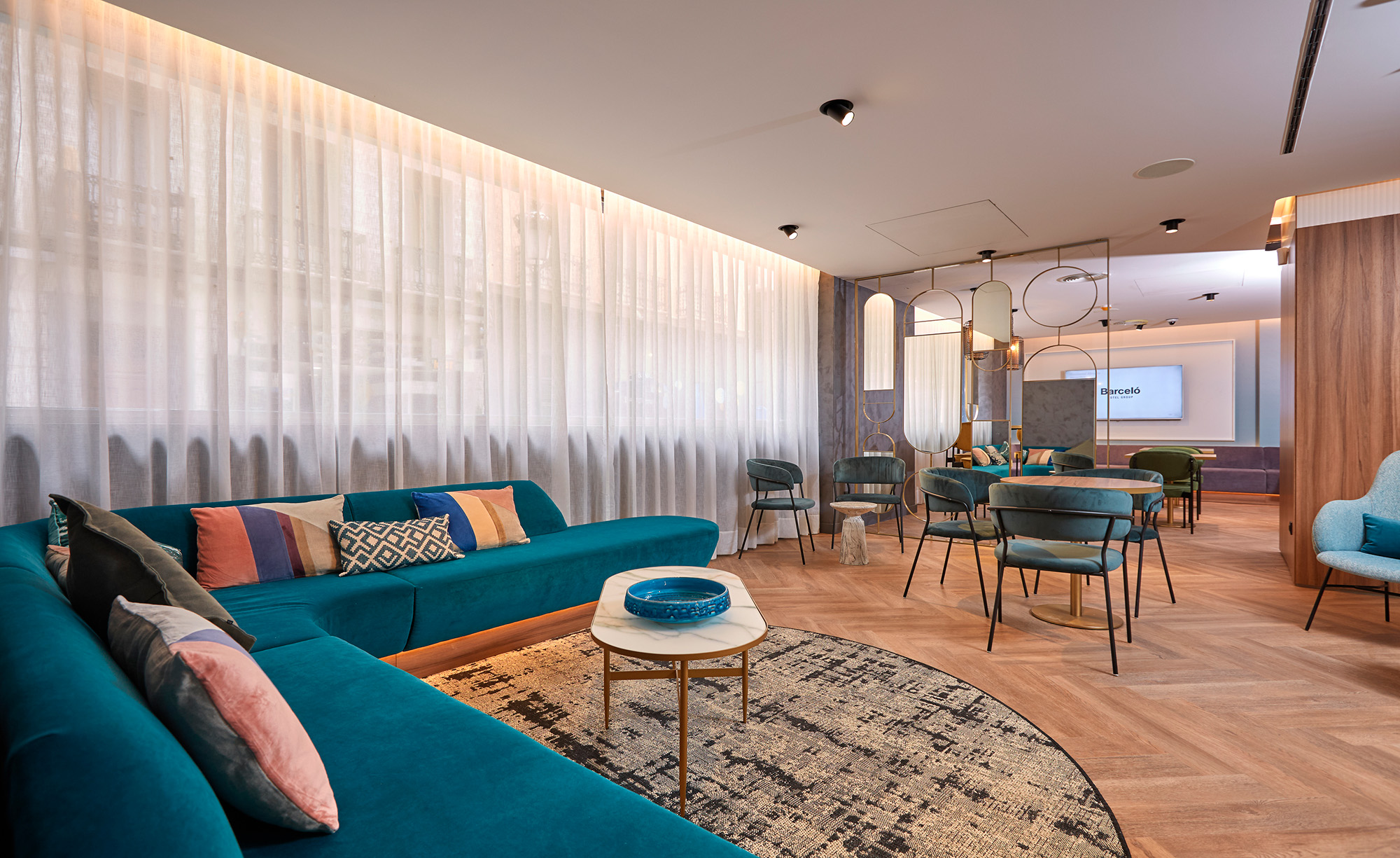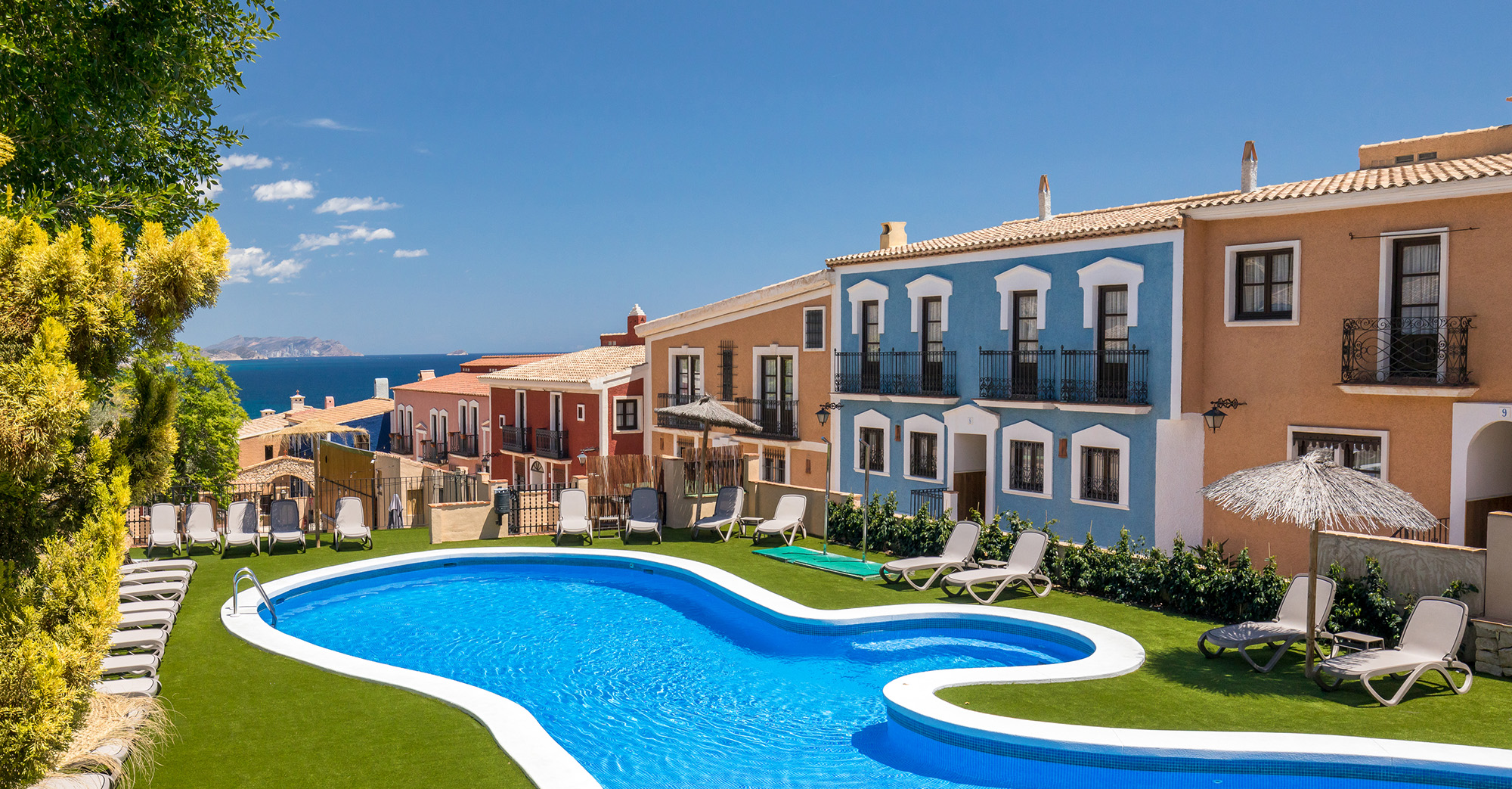Built in Herrerian Renaissance style on the site of a former mosque, the Cathedral of San Nicolás de Bari in Alicante has a restrained façade, although its fifteenth-century Late Gothic cloister, which remains from a former medieval church and is linked to the cathedral by means of two sumptuous Baroque doors, is particularly striking. Inside the cloister of San Nicolás you can enjoy the small garden and the incredible silence of this mystical space, which is in stark contrast to the hustle and bustle of the surrounding streets.
Situated in the heart of the city, Alicante Cathedral was declared a co-cathedral in 1959 and since then it has been the seat of the Diocese of Orihuela-Alicante together with Orihuela Cathedral.
Co-cathedral of San Nicolás de Bari: a place of calm in Alicante
Alicante Cathedral is a haven of peace where you can enjoy the silence and the mystical air that surrounds its walls. It was designed by Agustín Bernardino, a pupil of Juan de Herrera, who decided that its interior should have large proportions and a 45-metre-tall dome, which he commissioned the Alicante-born architect Miguel del Real to design. The most striking feature is its blue colour, which delights architecture and design enthusiasts as they gaze up admiring this unique and characteristic feature of the cathedral.
What was until 1959 the collegiate church of San Nicolás was built in the seventeenth century, between 1616 and 1662, first and foremost in Herrerian style, although Baroque detail still remains. Incidentally, the marble that was used on the staircase leading up to the Baroque altar came from Genoa.
The Baroque chapel of Alicante Cathedral
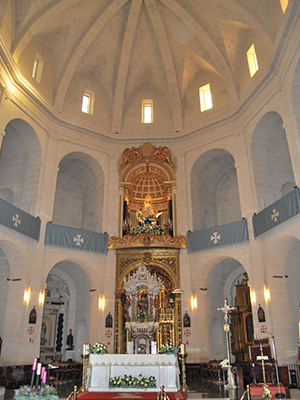
One of the features that is worth highlighting inside the cathedral is the Communion Chapel, regarded as one of the most beautiful examples of the Spanish High Baroque, which boasts two doors, the Negra door and the Santa Faz door. Building work began on the chapel half a century after the church was completed, devised as a small place of worship with a Greek-cross plan and barrel vaults on its flanks. The chapel, designed by Juan Bautista Borja (1695–1738), is overlooked by an altarpiece depicting the Annunciation in marble.
Other interesting features include the doors and the ironwork of the cloister’s arches and, above all, the altarpiece of Saint Nicholas, patron saint of the city, which was created by Juan de Villanueva in 1676. Next to it is the reliquary bust of the Alicante-born Saint Felicitas (fifteenth century) and the sculptures of the co-patron saints Saint Roch and Saint Francis Xavier.
Rich artistic heritage
Highlights of the important artistic heritage of Alicante Cathedral include the Las Ánimas altarpiece, by Nicolás Borrás (sixteenth century), Cristo de la Buena Muerte, by Nicolás de Bussy (seventeenth century), a marble and jasper baldachin, dating from 1688, and the sixteenth-century organ, the oldest in the region of Valencia. Other outstanding pieces include La cena de Emaús, by Juan Ribalta (sixteenth century), San Guillermo, by Pedro Orrente (1639), Adoración de los Reyes, by Senen Vila (seventeenth century), and San Vicente Ferrer, by Bautista Vera (1702).
In-between the retrochoir and the centre is a niche with a beautiful Renaissance sculpture dating from the middle of the last century of Our Lady of Los Remedios, patron saint of the city, which can be reached via a staircase from the sacristy. The niche is made from marble and carved from polychrome wood.
The sundial of Alicante Cathedral
On the exterior façade of the Co-cathedral of San Nicolás de Bari there is a sundial and various inscriptions made using red ochre, a pigment that was used for decorative purposes.
The cathedral has a Latin cross plan and a large apse with a retrochoir and as the upper floor has twice the ceiling height as the lower floor, the nave reaches a considerable height.
As Saint Nicholas is the patron saint of Alicante, every 6 December a Solemn Mass is held in his honour in the cathedral followed by a procession through the streets of the city replete with a person depicting Saint Nicholas riding his horse.




































































